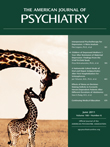This epic book can first be understood in terms of what it is not. It is not a book about the mind-brain question or the origins of consciousness, although it addresses both of these issues from a philosophical as well as neurological perspective. Nor is it a case series of interesting neurological findings and fascinating patients. However, readers will certainly have a good understanding of Capgras syndrome, Cotard's syndrome, and other rare neuropsychiatric conditions following their journey through The Master and His Emissary. In essence, Iain McGilchrist's book is an exploration of the link between the brain's hemispheric asymmetry and the historical development of Western society. This is no small task: chronicling how the left brain's determined reductionism and the right brain's insightful and holistic approach have shaped music, language, politics, and art.
The first half of the book provides a thorough understanding of brain lateralization. At the macroscopic level of gross pathology, anatomical differences between the two hemispheres and concepts such as Yakovlevian torque are explained in detail. On the other end of the spectrum, at the most microscopic and molecular level, differences between neurotransmitter activity in the right hemisphere (increased noradrenaline reliance) and left hemisphere (increased dopamine reliance) are expounded upon. Human emotionality is then localized in terms of hemispheric asymmetry: the right hemisphere's dominance of emotional expressivity exists with the notable exception of anger, which is a dopamine-mediated, reward-driven process that is controlled by the left frontal lobe. Through gleanings from imaging studies, neurological case reports, and psychological testing, the author describes sadness, guilt, realism, and empathy as being mediated by the right hemisphere. People with right hemisphere deficits, depending on the site and extent of their lesions, can present with a variety of symptoms that might otherwise be characteristic of schizophrenia, which suggests that an unbridled left hemisphere drives these processes. Cognition is also described in terms of the functional differences between the two hemispheres, notably the right hemisphere's dominance in alertness and sustained attention and the left hemisphere's governance of focused and selective attention.
The second half of the book is what separates it from other academic works focused on the neuroscience of brain asymmetry. This is where the author takes his framework of the left hemisphere's self-obsessed reductionism and the right hemisphere's empathic holism and tries to “understand the structure of the world that the brain has in part created” (p. 1). The author describes at length the left hemisphere's ruthless campaign to control all that it encounters, perhaps based on its increased interconnectivity and self-referential qualities, and describes how this has subsequently affected both modern Western culture and the individuals who live within it. Here are the author's musings of schizophrenia as a “modern disease,” a concept buttressed with data showing a spike in the prevalence of chronic psychotic illness after the 18th century and the left hemisphere-dominated industrialization of the Western world. From here, the author proposes that certain essential elements of left-hemispheric schizophrenia psychopathology, such as hyper-rationalism, hyper-reflexive self-awareness, disengaged emotionality, and disembodied existence, have become defining characteristics of Western culture. Of the evidence the author provides to support this thesis, perhaps the most fascinating is the juxtaposition of famous modern art pieces, including the works of Matisse, Magritte, and Picasso, with the artwork of schizophrenia patients and his frank comparisons between the two.
Iain McGilchrist describes his topic as “neurophilosophy,” which means that his book traverses between the respected fields of Wernicke and Buber throughout its chapters. Perhaps this is why he proudly and primarily identifies himself as a psychiatrist. For indeed all psychiatrists, no matter how biologically or dynamically oriented they might be, have shared intellectual curiosities that span the divide between neuroscience and philosophy. And yet it is clear that this book is not written primarily for the practicing psychiatrist. The author does not discuss at great length how the neuroanatomy of right and left brain asymmetry can help to explain the pathophysiology of mental illness nor how this knowledge can aid in the treatment of this patient population.
This aside, Iain McGilchrist's crusade against brain unilateralism results in a brilliantly written book that valiantly addresses the effect hemispheric asymmetry has had on Western civilization. And while the author quotes Ramachandran and Heidigger more frequently than Freud and Bleuler, The Master and His Emissary is still certainly a relevant book for any psychiatrist (and any neuroscientist or philosopher for that matter).

